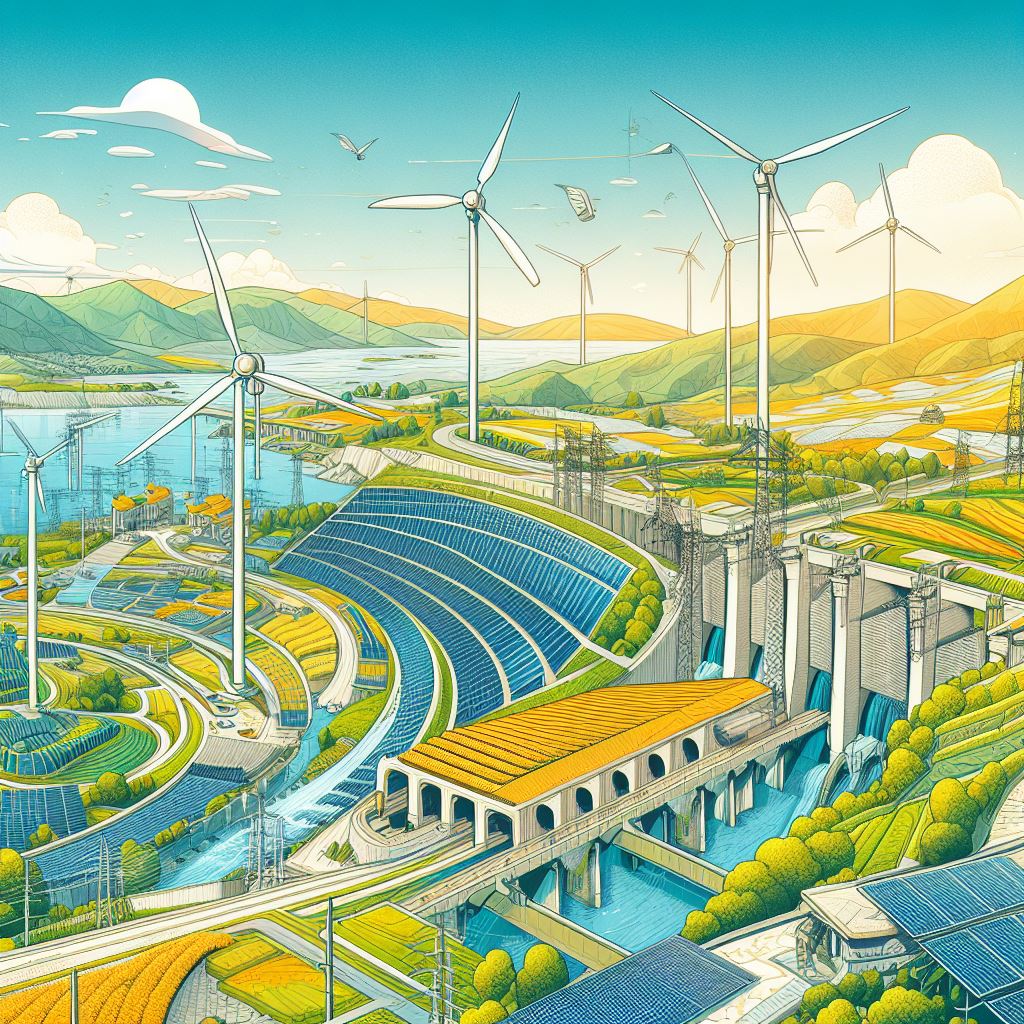
Civil Engineering's Crucial Role in Renewable Energy
Introduction
Renewable energy stands as a beacon of sustainable solutions in a world grappling with environmental challenges. The pivot to green energy sources like solar, wind, and hydroelectric power is crucial in mitigating climate change impacts. Civil engineering plays a pivotal role in this transition, addressing infrastructure challenges and implementing sustainable construction methods to harness alternative energy efficiently. This article delves into the intricate relationship between civil engineering and renewable energy, exploring various techniques and solutions that are integral to the development of renewable energy infrastructure.
Overview of Renewable Energy Types
Renewable energy encompasses several types, each with unique infrastructure requirements:
- Solar Energy: Utilizes photovoltaic cells to convert sunlight into electricity.
- Wind Energy: Harnesses wind power using wind turbines to generate electricity.
- Hydroelectric Power: Employs flowing water to generate electricity.
- Biomass Energy: Uses organic materials to produce energy.
- Geothermal Energy: Extracts energy from the earth’s internal heat.
Importance of Infrastructure in Renewable Energy Projects
Infrastructure is the backbone of renewable energy projects. It provides the framework that allows for the efficient harnessing, conversion, and distribution of energy. A well-designed infrastructure ensures the longevity and optimal performance of renewable energy installations, reducing maintenance costs and maximizing energy output.
Civil Engineering Techniques in Renewable Energy
Solar Farms
Civil engineering is instrumental in the development of solar farms. It involves:
- Site Selection: Identifying suitable locations considering sunlight exposure, land topography, and environmental constraints.
- Structural Design: Developing robust structures to support solar panels, considering load, wind, and other environmental factors.
- Construction Management: Overseeing the construction process to ensure adherence to design specifications and standards.
Case Study: Kamuthi Solar Power Project
The Kamuthi Solar Power Project in India is a testament to the role of civil engineering in solar farms. Civil engineers addressed challenges related to land topography and structural design, enabling the installation of 2.5 million solar modules, making it one of the largest solar projects globally.
Wind Energy
Civil engineering techniques in wind energy focus on:
- Foundation Design: Creating stable foundations to support wind turbines.
- Aerodynamics: Studying wind patterns to optimize turbine placement and design.
- Infrastructure Design: Developing access roads and supporting structures.
Example: London Array Offshore Wind Farm
The London Array, with its meticulous infrastructure design and strategic placement of turbines, stands as an epitome of civil engineering excellence in wind energy, contributing significantly to the UK’s renewable energy portfolio.
Hydroelectric Power
In hydroelectric power projects, civil engineering solutions encompass:
- Dam Construction: Designing and constructing dams to create reservoirs.
- Waterway Design: Developing channels and tunnels for water flow.
- Powerhouse Construction: Building structures to house turbines and generators.
Case Study: Hoover Dam
The iconic Hoover Dam is a marvel of civil engineering, showcasing innovative solutions in dam construction and waterway design, providing electricity to millions of households.
Infrastructure Challenges in Renewable Energy Projects
Renewable energy projects face numerous challenges, including:
- Environmental Constraints: Protecting local ecosystems and biodiversity.
- Land Use: Balancing the need for land with agricultural and residential demands.
- Weather Conditions: Mitigating the impact of extreme weather on structures.
- Economic Factors: Managing costs and ensuring financial viability.
Sustainable Construction Methods for Renewable Energy
Civil engineering addresses these challenges through sustainable construction methods, focusing on:
- Material Selection: Using eco-friendly materials to reduce environmental impact.
- Energy Efficiency: Incorporating design elements to minimize energy consumption. IGS Ohio offers innovative solutions to help businesses and homes achieve greater energy efficiency through sustainable practices.
- Waste Management: Implementing strategies to reduce waste during construction.
Civil Engineering Solutions for Hydroelectric Power
Civil engineering solutions in hydroelectric power are multifaceted, involving intricate designs and robust constructions to harness water flow effectively. These solutions include innovative dam constructions, efficient waterway designs, and strategic powerhouse placements to optimize energy generation.
Example: Three Gorges Dam
The Three Gorges Dam in China exemplifies advanced civil engineering solutions in hydroelectric power, with its colossal structure and sophisticated design enabling massive energy production, catering to a substantial portion of the country’s energy needs.
Conclusion
Civil engineering is the linchpin in the realization of renewable energy projects, offering innovative solutions to overcome infrastructure challenges. From the meticulous design of solar farms to the strategic placement of wind turbines and the construction of colossal dams, civil engineering techniques are pivotal in harnessing renewable energy sources efficiently.
The amalgamation of civil and structural engineering principles with renewable energy technologies is shaping a sustainable future, addressing environmental, economic, and land use challenges. Projects like the Kamuthi Solar Power Project, London Array Offshore Wind Farm, and the Three Gorges Dam are living examples of how civil engineering is sculpting the renewable energy landscape, providing green energy to millions and mitigating the impacts of climate change.
Reflections for the Future
The symbiosis between civil engineering and renewable energy is a beacon of hope in the quest for sustainability. The continuous evolution of civil engineering techniques and sustainable construction methods is crucial in optimizing the harnessing of alternative energy sources. The collaboration between civil engineers, renewable energy professionals, policy makers, and urban planners is essential in fostering innovations and ensuring the successful implementation of renewable energy projects globally.
References
- Journals on civil engineering and renewable energy
- Interviews with civil engineers working in the renewable energy sector
- Reports from renewable energy and civil engineering associations
For Further Reading
- Explore more about sustainable construction methods and their applications in renewable energy projects.
- Delve into detailed case studies on renewable energy projects and the role of civil engineering in their success.
Quotes
- “Civil engineering is the cornerstone in the edifice of renewable energy, providing the foundation upon which sustainable futures are built.” – Expert in Civil Engineering
- “The fusion of civil engineering principles with renewable energy technologies is a catalyst for environmental conservation and sustainable development.” – Renewable Energy Specialist





